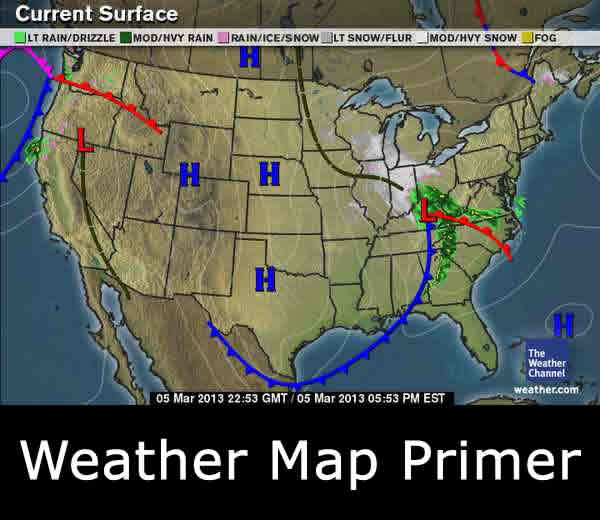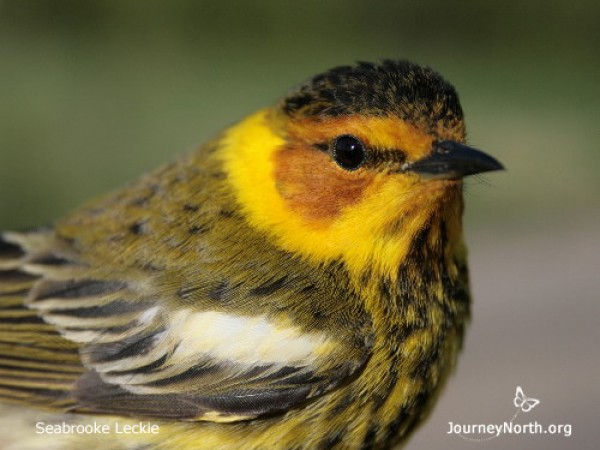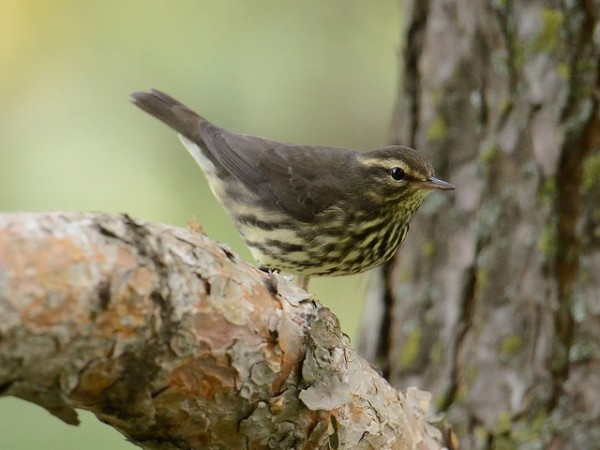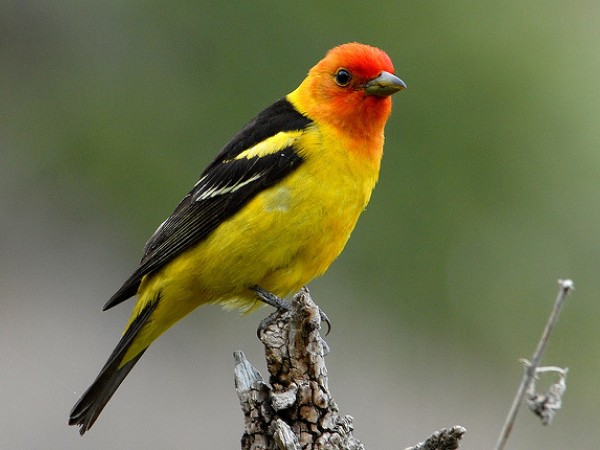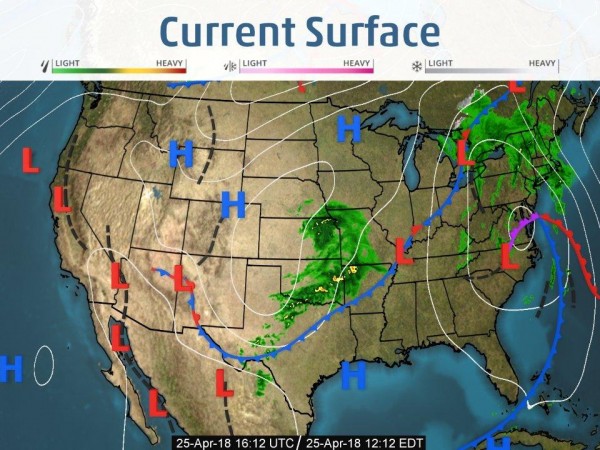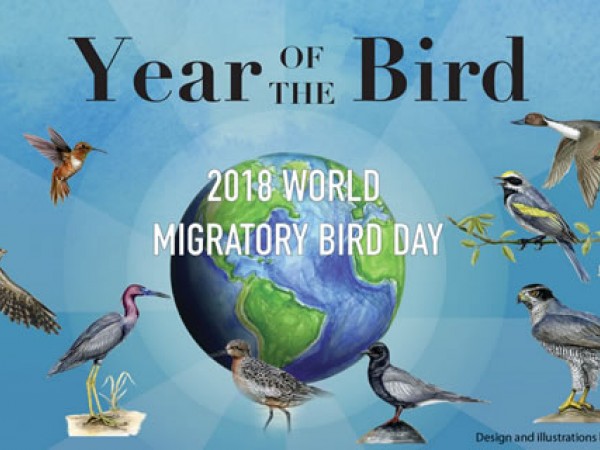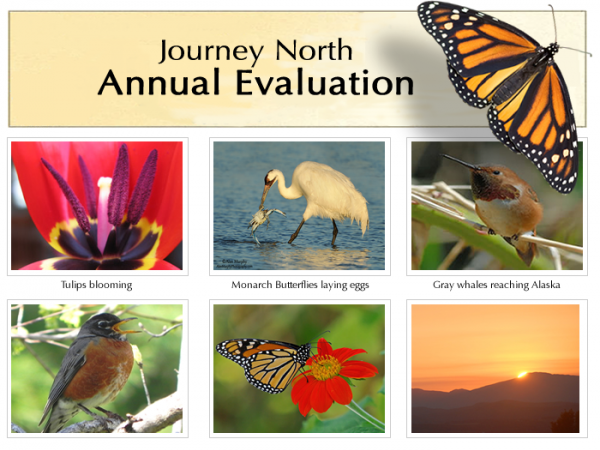Active Migration Despite Wet Weather
Wet conditions did not dampen a very active week of songbird migration.
Weather and Songbird Migration News: April 25, 2018
Dear Journey North,
Wet, Wet, Wet -- Birds, Birds, Birds!
Despite the weather, there has been a lot of migrant activity. A stalled front, followed by a slow moving storm system from the Pacific, kept migrants bottled up along the Gulf coast, so large numbers of migrants were seen, especially in Texas and Louisiana. As has been the case for the past couple of weeks, orioles, tanagers, and grosbeaks were numerous, but you can add to that Gray Catbirds, along with 21 species of warblers. Among the new warbler arrivals were the Golden-winged Warbler, Cape May Warbler, and Blackpoll Warbler. At my study site this morning in Tennessee, I saw my first Indigo Bunting, Northern Waterthrush, and Swainson's Warbler.
Songbirds Advance in the East and Midwest
For a few days between the moving of that stalled front and the arrival of the Pacific system, migrating songbirds were allowed to make their way further north. In the east, Blue-headed Vireos and Purple Martins were seen in Massachusetts, and Red-eyed Vireos and Swainson's Thrushes made it up to Maine. In the Midwest, Tree Swallows finally made it to Michigan, while Swainson's Thrushes arrived in what has been cold and snowy Minnesota!
New Group Arrives in the West
The western U.S. was very active this week as well. There was a long stretch with clear skies and southerly winds, which brought in a new group of migrants. In California, birders were seeing dozens of Western Tanagers, Black-throated-gray Warblers, and Lazuli Buntings, and hundreds of Cliff, Barn, and Tree Swallows. The good flying conditions helped push many Black-throated-gray Warblers and Orange-crowned Warblers as far as Washington.
Will Good Migration Continue?
If you look at the weather map, you can see that Pacific system is still bringing rain to the mid-Atlantic and Northeast, so birds will be sitting tight for another day. There is another system moving east through the Great Plains, which will keep birds grounded through much of the eastern half of the country as it continues to move over the next couple of days.
Out west, skies are clear and winds are favorable, so I expect migrant activity to continue to be good. The long-range forecast for the next 7-10 days is for drier and warmer weather, so migrants can look forward to getting to their breeding grounds soon!
Year of the Bird: What's in a Name?
In my earlier comments, I mentioned the Swainson's Warbler and Swainson's Thrush. Who was Swainson? William Swainson was a 19th Century British naturalist and illustrator. Because of his contributions to science, a number of other naturalists and ornithologists honored him by naming several new species after him. In addition to the thrush and warbler, there is also a Swainson's Hawk.
Another name you see frequently is Wilson. Alexander Wilson is regarded as the first American ornithologist, and he has 5 species named after him; Wilson's Warbler, Wilson's Snipe, Wilson's Plover, Wilson's Phalarope, and Wilson's Storm-petrel. See how many other birds you can find that are named after people.
Take care,
David Aborn, Ornithologist
North Chickamauga Creek Conservancy
Chattanooga, TN



